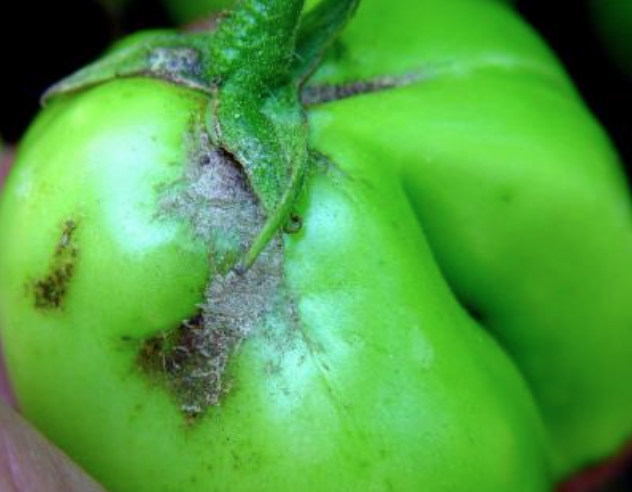Thrips (Thrips tabaci, Frankliniella occidentalis, F. schultzeii and Ceratothripoides brunneus)

(c) A.M. Varela, icipe

(c) A.M.Varela, icipe

(c) A.M.Varela, icipe

(c) A.A. Seif
Thrips may also be a problem in tomatoes in Kenya. Thrips are small (about 1 to 2 mm long). They usually feed on the lower surface of leaves puncturing them and suck the exuding sap. They also attack buds, flowers and fruits. Attacked leaves have a silvery sheen and show small black spots (thrips excrements). Under heavy infestation attacked buds, and flowers usually fall off. Attacked fruits show speckling and small necrotic patches on the surface affecting fruit quality. Fruits may become deformed.
Thrips feed on tomatoes at all stages, but their feeding on seedlings is particularly damaging. Heavy infestation can reduce stands of young seedlings in hot weather. Thrips of the genus Thrips and Frankliniella are vectors of viruses such as the Tomato Spotted Wilt Virus (the most economically important virus in tomato production) and the Tomato Chlorotic Spot Virus.
| What to do: Conserve natural enemies. Predatory mites (eg. Amblyseius sp.), anthocorid bugs (e.g. Orius spp.), and other predators such as ladybird beetles, lacewings and spiders, and the fungus Entomophthora are important in natural control of thrips. Monitor the crop regularly. Check plants daily in the nursery, and crop borders in the field. Be particularly vigilant at flowering. Pay careful attention to flowers and flower buds. Destroy thrips pupae in the soil. This helps reducing subsequent thrips populations. Plough and harrow before transplanting to expose pupae in the soil from previously infested crops to natural enemies and desiccation. Soil solarisation and flood irrigation (flooding previously infested fields prior to planting/transplanting) destroy a large proportion of thrips pupae present in the soil. If necessary spray biopesticides. Neem and some other plant extracts are reported to control thrips. Spinosad, a bacterial derivative is effective in thrips control. However, timing of biopesticide application is important. Thrips are difficult to control with insecticides due to their secretive habits (eggs are laid in plant tissue, the larvae and adult shelter in the flowers and larvae pupate in the soil). Spraying early in the morning or in the evening and mixing the spray with a sugar solution (which attracts the thrips out of the flowers) are reported to increase efficacy of sprays For more on biopesticides click here |